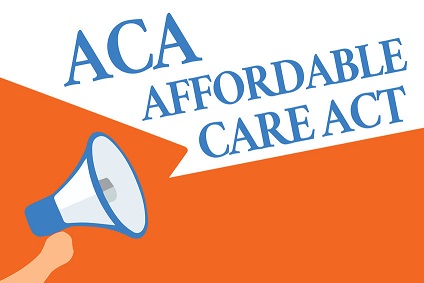What to Expect From the ACA in 2019

The only thing certain about the Affordable Care Act (ACA) is change. And with a new year comes new compliance deadlines and proposed new rules and regulations. The Trump Administration has signaled its intent to propose legislation to again alter the ACA.
Here’s what you need to know about health care coverage in 2019.
Compliance Deadlines
The following are the reporting deadlines for the 2018 tax:
Furnish Form 1095-C to Employees
It’s imperative that you give your employees Form 1095-C by the March 4, 2019 deadline so they will have the information they need to complete Line 61 on their individual tax returns. Employees must show whether they or their family members had minimum essential coverage the year before.
You must report the following on Form 1095-C:
- Proof of Minimum Essential Coverage (MEC)
- Employee ID number
- Social security numbers of the employee and dependents (not spouse). If you fail to file and furnish correct information on Form 1095-C, you may be subject to a $500 penalty per form.
File Forms 1094-C/1095-C if You are an ALE and Filing by Paper by February 28, 2019
Just as your employees must show they are in compliance with the Affordable Care Act, you need to show that you are in compliance with the Employer Shared Responsibility Mandate — if you are an Applicable Large Employer (ALE). An ALE is a company with 50 or more full-time equivalent employees. The ACA defines a full-time employee as one who works 30 hours or more each week.
Code sections 6055 and 6056 of the ACA requires ALEs to provide information about whether they offered affordable minimum essential health coverage (MEC) and enrollment in minimum essential health coverage for eligible employees.
You may file this form by paper or electronically if you have fewer than 250 employees.
Failure to file complete and accurate Forms 1094-C by the deadline will result in penalties equal to $250 per form, not to exceed $3 million per year.
File Forms 1094-C/1095-C if You are an ALE and Filing Electronically. Monday, April 1, 2019
Any employer with 250 or more employees must file electronically. By the way, April 15 is Tax Day when Individual tax returns are due. Employees should include healthcare coverage information on their individual returns.
The Changing Landscape
The Trump Administration proposed a rule change that allows large employers to make tax-free contributions to employees who purchase less expensive short-term health plans.
Short-term health plans, which are structured like major medical health plans, can provide coverage and save consumers about 50 percent or more when compared to ACA plans. However, they also offer fewer benefits than plans sold on the federal and state Marketplace Exchanges. In addition, the plans are not compliant and individuals with pre-existing conditions can be denied coverage. The premiums, however, are substantially lower.
The proposal would revise the Obama Administration’s 2013 rule that allows employers to make a tax-free contribution to employees’ premiums for qualified ACA plans that cover pre-existing conditions and include coverage of essential health benefits. Short-term plans were not included in the rule and would not receive tax benefits.
The 21st Century Cures Act in 2016 allowed small employers to get tax deductions for contributing to employee premiums for short-term plans. If the Administration’s proposal is approved, then large employers also would get the tax deductions.
The Administration already acted to make short-term plans more appealing. It expanded the duration of the plans from 90 days to nearly 12 months, with renewal options to extend coverage to three years.
Observers say the decision to extend coverage periods makes short-term plans a viable alternative to COBRA plans. COBRA allows employees to remain on the employer’s health insurance plan when they leave the company. However, COBRA plans can be expensive.
Short-term plans also could be a good option for new employees if the company has a 90-day waiting period before health care coverage goes into effect. The plans also can help early retirees who are not yet eligible for Medicare.
According to a senior Administration official, this rule change would empower “workers and employers to make their own decisions with more options.” Detractors worry that employees will not realize that these plans — while cheaper — do not cover the 10 essential health benefits required by the ACA, and they have coverage gaps.
Another factor affecting short-term plans is the Administration’s new guidance allowing states to give subsidies to customers of short-term and association plans, which could lower the cost of the plans even more.
Employers also can take advantage of another Trump Administration change: Association Health Plans (AHPs). AHPs allow small businesses, including the self-employed, to band together by geography or industry and obtain health care coverage using the same bargaining power as large employers.
Please contact us if you need further clarification of any of these items.
